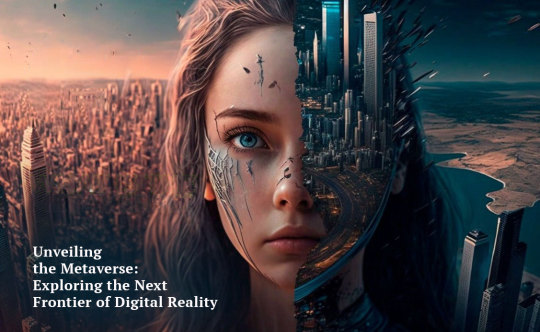#web3 application development
Text
What are the core features of Web3?
The essential components of Web3 are as follows:
Ownership
Web3 gives people total control over their digital assets in a previously unheard-of way. Consider the case of playing a web2 game. The player's account is immediately connected to any in-game items he purchases. If the game's creators delete his account, he will forfeit these items. Conversely, if he stops playing the game, he will forfeit the value of the in-game object he bought.
Web3's non-fungible tokens make direct ownership possible (NFTs). Players' ownership cannot be taken away by anyone, not even the game designers. If a player decides to cease playing, he can also trade or sell his in-game items on public marketplaces to recoup some of his value.
Censorship resistance
On Web3, user data is kept on the blockchain. When they choose to leave a platform and integrate it into an other interface that better embodies their values, they could take their reputation with them.
In contrast to Web 2.0, which requires content creators to place their trust in platforms to uphold the same regulations, Web 3 platforms come with built-in censorship resistance features.
Decentralized autonomous organizations
Users of Web3 development can utilise tokens that behave like shares to collectively control the platform in addition to owning their data, as they do already. Decentralized platform decision-making and ownership coordination are made possible by DAOs.
Decentralized decision-making over a resource pool is automated by prearranged smart contracts used by DAOs (tokens). Owners of tokens can cast votes to determine how resources are distributed, and the code will then carry out the chosen outcome.
However many Web3 communities are referred regarded as DAOs. Within each of these categories, there are various degrees of decentralisation and coding-based automation.
Digital identity
For each website a person visits, they typically create an account. He will, for example, have a Twitter handle, a Facebook page, and a Reddit account. The question now is whether he wants to change his display name or profile photo.
Social sign-ins are employed in specific situations, yes. Yet censoring is a persistent issue that is brought up here. These sites may, with a single click, cut off the person from his entire online existence. Even worse, a lot of platforms want you to trust them with your personal information in order to create an account.
By allowing users to manage their online identities, Web3 solves these problems. An anonymous, dependable, and single login across platforms is possible by using a blockchain-based address.
Native payments
Because Web2's payment mechanism is based on banks and financial gateways, it does not accept payments from people without bank accounts. Without the use of a reliable intermediary, Web3 uses tokens like SOL or ETH to deliver money straight to the browser.
0 notes
Link
Web3 is the new transcendence of internet that has the potential to transform the user experience. But getting the right web3 developer can be difficult. Explore the below-given link to know more about hiring a web3 developer.
#web3 development services#web3 development company#web3 developers#Web3 Application Development#NFT Development#Custom Apps Development#seasiainfotech#seasia
0 notes
Text

Join the Web3 Revolution! With a market cap of $27.5B and counting, Web3 crypto networks are reshaping the digital landscape. Don't miss out on the future of technology!
Know more - https://bit.ly/42sPq8c
2 notes
·
View notes
Link
The Cryptolic token is a deflationary token on the Binance Smart Chain (BSC). This token will reflect the team’s initiative to provide meaningful growth vehicles for holders and partners. An integrated organization with a passion for expanding the utility, development, and community of DeFi.
Cryptolic (CPTLC) serves as a unique way to gain rewards from the buy/sell volume, and additionally through profit sharing from the Service Agency. This allows holders to use Cryptolic as a long-term growth vehicle even during times of market fluctuation.
#bscgem#CPTLC#cryptolic#bsc#BUSD#rewards token#BUSD rewards#binance#web3 developers#web3 applications#web3#smart contracts
3 notes
·
View notes
Text
Why Web 3 in IoT is the Digital Evolution?
Web 3 in IoT epitomizes digital evolution, converging IoT devices with decentralized web technologies. This fusion enhances connectivity, security, and interoperability, fostering a dynamic ecosystem where devices exchange data autonomously and execute smart contracts. Blockchain integration ensures data integrity and privacy, enabling trustless interactions among devices and users. Decentralized governance and incentivization mechanisms spur innovation, resilience, and inclusivity, propelling us toward a future where interconnected devices drive unprecedented efficiency and convenience in everyday life.
#australia#devstreeau#mobileappdevelopment#iphone#mobile app developer company#web app development#ios#mobile app company#iot app development#iot applications#iotsolutions#web 3.0#web 3.0 development#web3#blockchain#metaverse#metaverse development#web and app development company#it company
0 notes
Text
Nadcab Labs - Pioneering Blockchain Innovation Across Industries

In the last decade, the blockchain landscape has evolved dramatically, transcending its initial roots in cryptocurrency to become a cornerstone of digital innovation. At the forefront of this revolution is Nadcab Labs, a beacon of progress in blockchain technology.
Nadcab Labs has distinguished itself as a leader in blockchain development. Their work is not confined to the financial sector; it permeates various industries, demonstrating the versatile applications of blockchain technology. Through their cutting-edge research and development.
Finance: A New Era of Trust and Transparency
In finance, Nadcab Labs solutions have introduced a new level of trust and transparency. They are pioneering systems that enhance security and streamline transactions, thereby reducing fraud and inefficiency in financial operations. Nadcab Labs is reshaping the way we think about data security, transparency, and efficiency.
Revolutionizing Supply Chain Management
The impact of Nadcab Labs blockchain technology in supply chain management has been profound. By introducing immutable record-keeping and real-time tracking capabilities, they are addressing longstanding challenges such as counterfeiting, loss, and inefficiency in supply chains.
Healthcare: Securing Patient Data
In healthcare, Nadcab Labs is making strides by implementing blockchain to secure patient data. Their systems ensure that sensitive health information is stored securely and shared with utmost confidentiality, revolutionizing patient care and data management.
Cybersecurity: Fortifying Digital Defences
Nadcab Labs contribution to cybersecurity is particularly noteworthy. They are developing blockchain-based solutions to fortify digital defences against rising cyber threats, ensuring data integrity and security for businesses and individuals alike.
Conclusion
Nadcab Labs relentless pursuit of blockchain excellence is paving the way for a more secure, transparent, and efficient future across various sectors. Their innovative approach and dedication to exploring the full potential of blockchain technology position them as a pivotal player in the digital transformation era.
#blockchain#Leading Blockchain Developers#Best Web3 Developers#Blockchain Application Developers#nadcablabs
1 note
·
View note
Text

Efficiency Redefined: Krypcore's Advanced Web3 Development Tools
Redefine the efficiency of your dApp development with Krypcore's advanced web3 tools. Our platform offers a suite of features that make the development process seamless and intuitive, ensuring that your decentralized applications stand out in the rapidly evolving digital landscape.
#web3 development company#Web3 Services#best web3 development platform#build web3 dapp#dapp crypto#dapps nft#dapper labs#defi dapps#dapp list#dapper company#create dapp website#Creating dApps#dApp creation#build web3 apps#create react app web3#web 3.0 application development#create web3 dapp#web 3 app development#Web3 development frameworks#web3 api development#web3 api solutions#web3 api for developers#web3 doc#web3 frameworks#web3 providers#web3 nodes#web3 api#web3 code#best web3 tools#web3 app development
1 note
·
View note
Text
The Evolution of Software: From Web 2.0 to Web 3.0 with Blockchain Technology
In the ever-changing landscape of technology, the evolution of software has been nothing short of revolutionary. With the advent of Web 2.0, the internet transformed from a static repository of information to an interactive platform for communication and collaboration. Now, the next frontier, Web 3.0, is ushering in a new era of decentralization and trust, thanks to the integration of blockchain technology. This advancement holds immense potential for businesses across various industries, redefining the way they operate, interact, and innovate.
Web 2.0: The Rise of Interactive Internet
Web 2.0 marked a significant shift in internet usage. It introduced dynamic web pages, social media platforms, and interactive content, empowering users to actively participate in the online experience. Businesses capitalized on this interactivity to engage with customers, market products, and build online communities. However, Web 2.0 still relied heavily on centralized systems, leading to concerns about data security, privacy, and control.
Web 3.0: The Decentralized Internet with Blockchain
Decentralization and Peer-to-Peer Transactions
Web 3.0, often referred to as the decentralized web, leverages blockchain technology to enable peer-to-peer interactions without the need for intermediaries. Blockchain, a secure and transparent ledger system, allows for secure transactions and data storage across a network of computers. This decentralization enhances security, reduces costs, and eliminates the dependence on centralized authorities.
Smart Contracts and Automation
Smart contracts, self-executing contracts with the terms of the agreement directly written into code, automate processes without the need for intermediaries. In businesses, this means faster and more secure transactions, streamlined supply chains, and efficient digital agreements.
Enhanced Data Security and Privacy
Blockchain ensures data integrity and security through cryptographic techniques. This heightened security level is especially crucial in industries like healthcare and finance, where sensitive data protection is paramount. Users have control over their data, granting or revoking access as needed, ensuring privacy rights are upheld.
Tokenization and Digital Assets
Web 3.0 enables the creation of digital assets and tokens using blockchain technology. This innovation opens new avenues for businesses, allowing them to tokenize assets, create unique digital collectibles, and establish decentralized finance (DeFi) platforms. These digital assets have real-world value and can be traded securely on blockchain networks.
Decentralized Applications (DApps)
Decentralized applications, or DApps, operate on blockchain networks, ensuring transparency, security, and user control. These applications can be utilized across various industries, from real estate and gaming to supply chain management and intellectual property rights. DApps offer businesses efficient and secure solutions while enhancing user experience.

Impact on Industries: A Glimpse into the Future
Finance and Banking
Web 3.0 disrupts traditional banking models, introducing decentralized finance solutions. Smart contracts facilitate lending, borrowing, and trading without intermediaries, providing financial services to the unbanked populations globally.
Healthcare
Blockchain technology enhances data security and integrity in healthcare, ensuring patient records are accurate, secure, and accessible when needed. It also enables secure sharing of medical data among stakeholders, improving patient care and medical research.
Supply Chain Management
Web 3.0 optimizes supply chain processes by enhancing traceability, reducing fraud, and ensuring the authenticity of products. Businesses can utilize blockchain to track products from manufacturing to delivery, ensuring quality control and customer satisfaction.
Entertainment and Gaming
In the entertainment industry, blockchain enables the creation of unique digital assets, such as rare in-game items and digital collectibles. This introduces new revenue streams for content creators and enhances user engagement through decentralized gaming platforms.
Conclusion
The evolution of software from Web 2.0 to Web 3.0 with blockchain technology signifies a paradigm shift in the digital landscape. Businesses embracing this transformation stand to benefit from enhanced security, reduced costs, increased efficiency, and innovative business models. As we venture further into the decentralized web, the integration of blockchain technology will continue to shape the future of industries, fostering trust, transparency, and unprecedented opportunities for growth.
#blockchain technology#software#custom software application#software development#web3#web 2.0#webdevelopment
1 note
·
View note
Text

Addus Technologies is the premier Web3 game development company that brings your gaming visions to life in the decentralized world. Our expert team crafts immersive, blockchain-powered gaming experiences that redefine player interactions, ownership, and rewards. With cutting-edge technology and a passion for innovation, we create the next generation of games, seamlessly integrating NFTs, virtual assets, and blockchain functionalities for an unparalleled gaming adventure. Elevate your gaming experience with us.
#web3 game development company#web3 game development services#web3 game application development#web3 game development solutions
0 notes
Text
What programming language is used for Web3 Application?
Web3 applications interact with the Ethereum blockchain and other decentralized networks. The primary programming language used for developing Web3 applications is JavaScript. Web3.js is the most commonly used library for building Web3 applications in JavaScript. It allows developers to interact with the Ethereum blockchain through its JSON-RPC API and smart contracts, enabling the creation of decentralized applications (DApps) that can read and write data on the blockchain, execute smart contracts, and interact with users.
Apart from JavaScript, there are other programming languages and libraries that can be used to build Web3 applications. Some of them include:
Python: Python developers can use libraries like Web3.py to interact with Ethereum and build Web3 applications.
Solidity: While Solidity is primarily used for writing smart contracts, some parts of a Web3 application, like contract deployment and interaction, may also involve using Solidity alongside JavaScript.
Go: Golang developers can use libraries like go-ethereum to interact with Ethereum and build Web3 applications.
However, JavaScript remains the most popular and widely used programming language for Web3 development due to its versatility, ease of use, and popularity of the Web3.js library.
Aspiring to learn about web3 application development? Enroll now in the web3 developer course!
0 notes
Text
Unveiling the Metaverse: Exploring the Next Frontier of Digital Reality
Introduction:
In recent years, the term “metaverse” has captured the imagination of both technology enthusiasts and mainstream audiences alike. With the rapid advancements in virtual and augmented reality, blockchain technology, and artificial intelligence, the concept of the metaverse has emerged as a tantalizing vision of a fully immersive, interconnected digital realm. In this blog post, we will delve into the metaverse, discussing its definition, key components, potential applications, and the implications it may have on various industries.
For more details read our latest blog - https://bit.ly/3qPHC2P

#software#software development#3sitservices#mobile application development#best app developers#mobile app development#apps#metaverse#cryptocurrency news#web3
1 note
·
View note